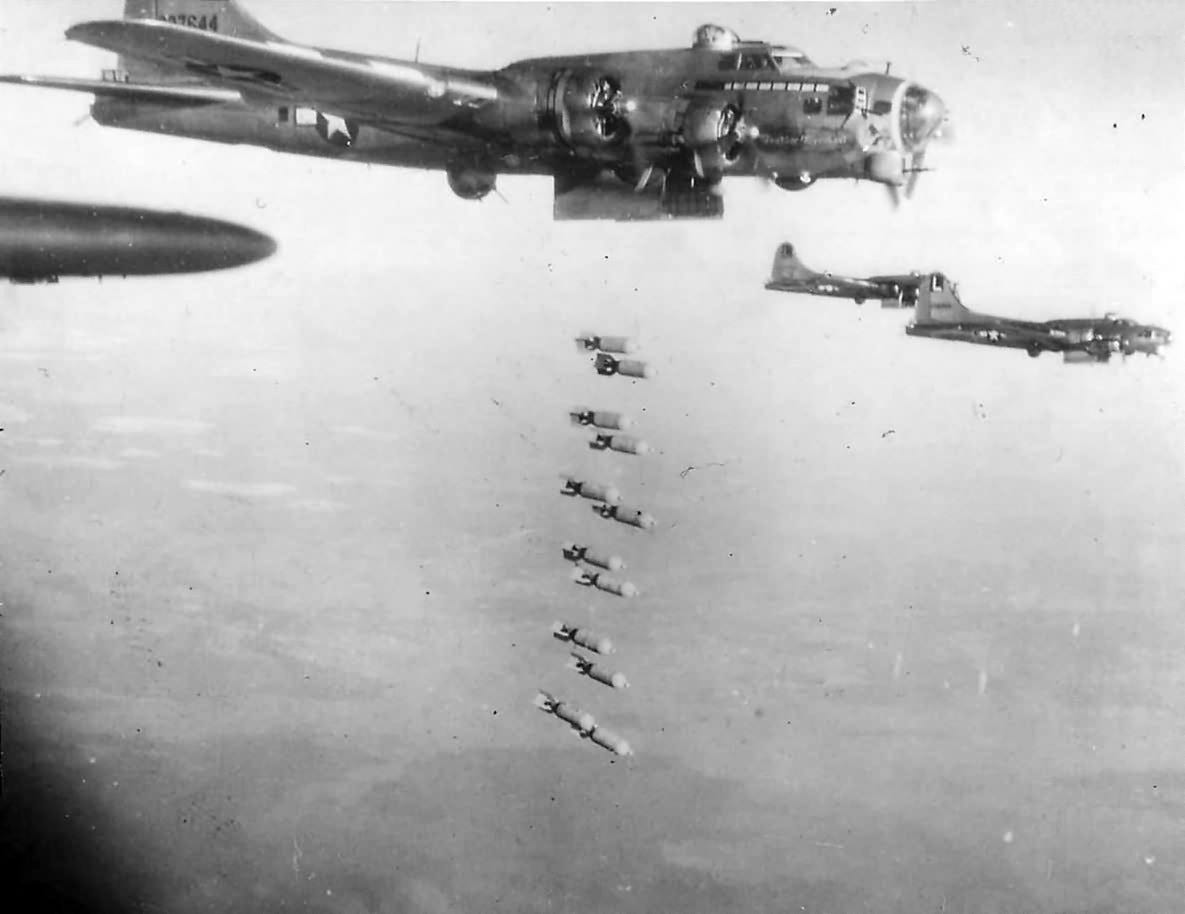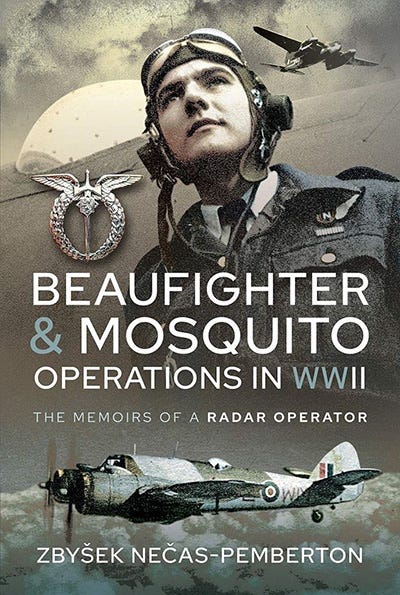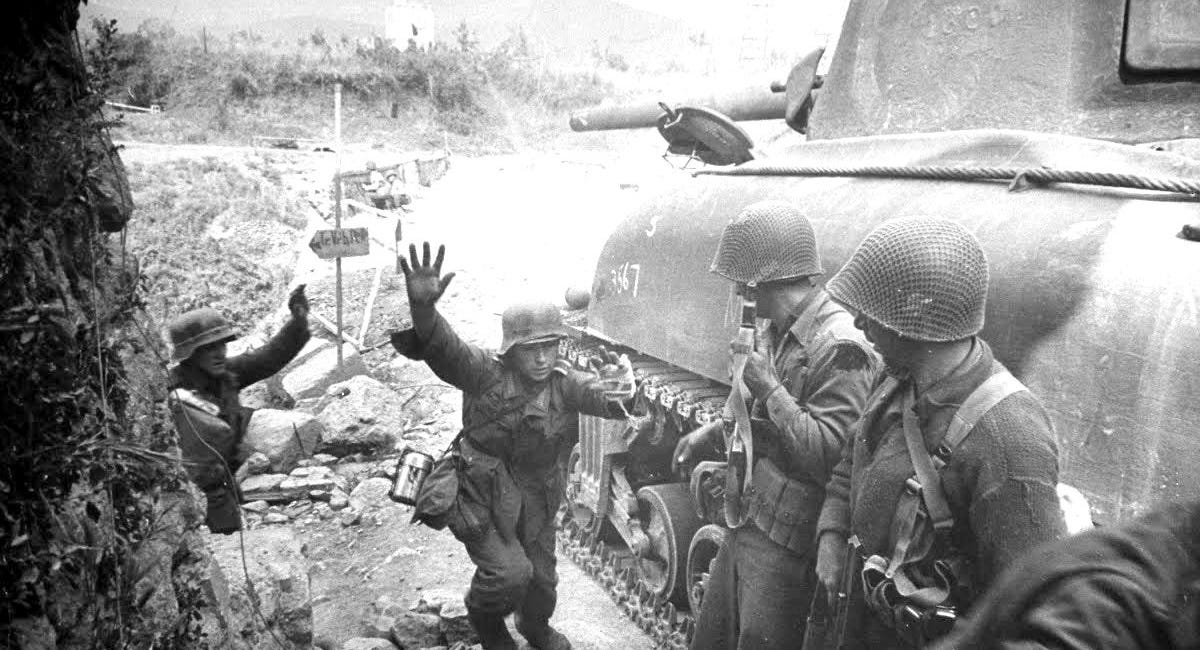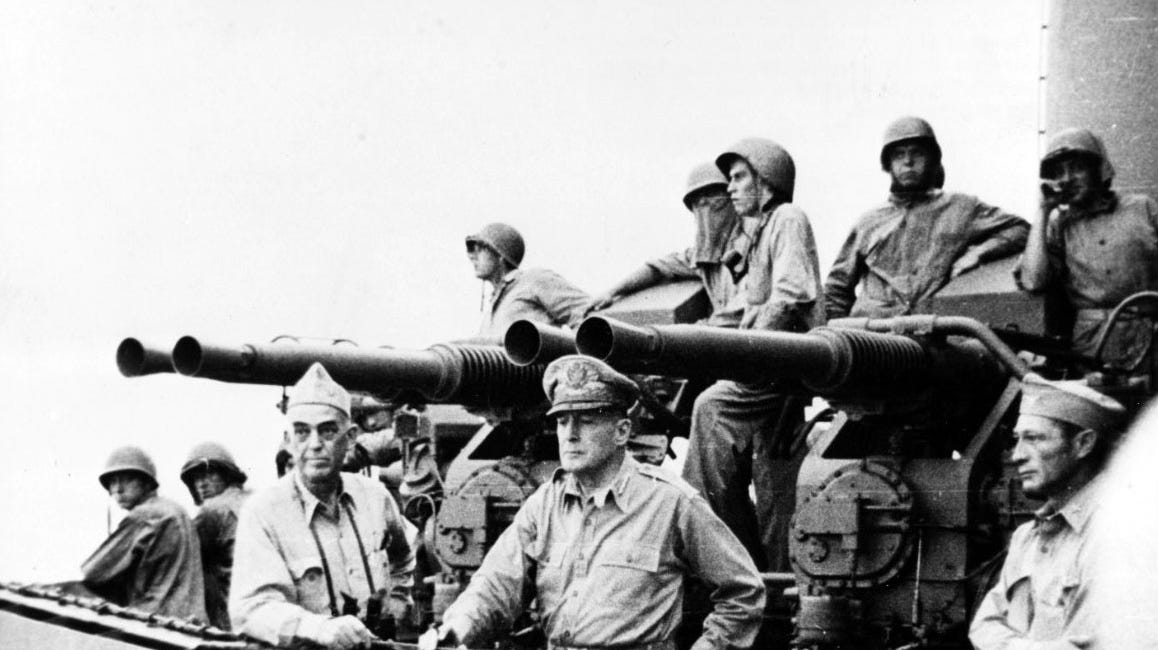Beaufighter And Mosquito Operations In WWII
A Czech radar operator in the RAF vividly describes his experience hitching a ride on a 8th Air Force B-17 on a raid over Germany
Zbyšek Nečas (1921-2018) had escaped from Czechoslovakia, aged just 18, on the eve of war, to join his cousin in Britain. He enlisted in the RAF in 1940 and was at first employed as a translator, participating in the interrogation of captured German aircrew. But he wanted to get into the fight - and eventually qualified as a Radar Operator. For the rest of the war he flew with No 68 Squadron RAF, which had a high proportion of Czech pilots, aircrew and ground staff.
Beaufighter And Mosquito Operations In WWII: The Memoirs Of A Radar Operator follows his story from Czechoslovakia to the end of the war, when he discovered that none of his immediate family had survived the German occupation.
The following excerpt tells of his trip on a B-17 after he had made the acquaintance of Major Thompson of the US 8th Airforce. He arranged for Thompson to have a night-time trip on his Beaufighter - during which they practised an interception on an unsuspecting Lancaster bomber. By return Thompson invited him to take a trip with him:
At first, I thought I would have just a joy ride in a B-17 during some kind of a test flight or something similar. But now I could see that a full-scale raid was being planned for the later part of the morning. But where to? Thompson, sitting next to me, sensed what was going through my mind and whispered that I could change my mind, even after the briefing. His quiet whisper had the opposite effect on me and I replied quietly that I should be only too pleased to see bombs falling on Hitler’s Third Reich, because my own flying activity as a night fighter did not give me such a chance. Of course, there were other motives, which were very deeply rooted in my psyche.
...
The chief briefing officer proceeded to explain the strategy of this raid. It was clear that initially we would pretend we were heading for Bremen, then we would turn towards Denmark so as to confuse the German defences, and even more important, to make the Luftwaffe concentrate their fighters into the wrong sector. At a precise moment, the whole air armada would divide into two large bombing groups, which again should confuse the German defences or at least make things very difficult. One group would fly directly over Hamburg and the other section would head south-east and after an established time, that group would also go for the real target. In this way, all the aircraft would reach their target with very little time difference and would drop all their bombs within about ten minutes. A really concentrated attack. The briefing came to an end and the station commander wished all the crews all the success and good luck.
...
One hour before getting airborne, we were all in our aircraft, identified by the letter ‘P’, and everybody was busy re-checking their individual equipment. I had met many US flyers, but Thompson’s air gunners were real characters. Nothing but laughter and always chewing gum in their mouths. They were full of jokes and were very surprised that I actually volunteered to participate, and of course they wanted to know all about a Beaufighter and what we do at night.
...
It was precisely 07.15 hours – a moment which I can never forget. Our engines roared on full power, and soon we were gathering speed on the runway. I was comparing the time it took this Fortress to get airborne in comparison to a night fighter, and the difference was tremendous. It took an eternity before I could feel that we were actually airborne. Now I could see a very impressive sight from the window as each formation was drawing closer together and setting an easterly heading. The whole armada was getting together and soon we all formed into the planned huge formation. I knew already that the ‘Yanks’ had to fly closely together, because only that way could they defend themselves from enemy fighters. A tight formation of these Fortresses offered a fantastically concentrated firing power from all the gunners on board.
One has to imagine that there could be as many as forty to fifty gunners firing all at the same time on one or two enemy fighters. To be able to fly through a shower of bullets and suffer no hits would be a true miracle for an attacking German fighter. And for this reason the golden rule had to prevail, namely to keep a tight formation at all times, even after dropping all the bombs. The Germans knew this and always tried hard to split such formations, because only then did they have a good chance to attack individual bombers without a great hazard to themselves.
After a continuous climb, we finally reached our operational altitude as we were crossing the East Anglian coast. We were at 20,000ft. Once over the North Sea, all the gunners were given permission from the captain to test-fire their guns. I had never heard such a loud noise of gunfire as then. All the gunners fired at the same time, a short burst or two into the sea. This gave me a pretty good idea what things would be like once we got over enemy territory. The weather was perfect and visibility unlimited.
...
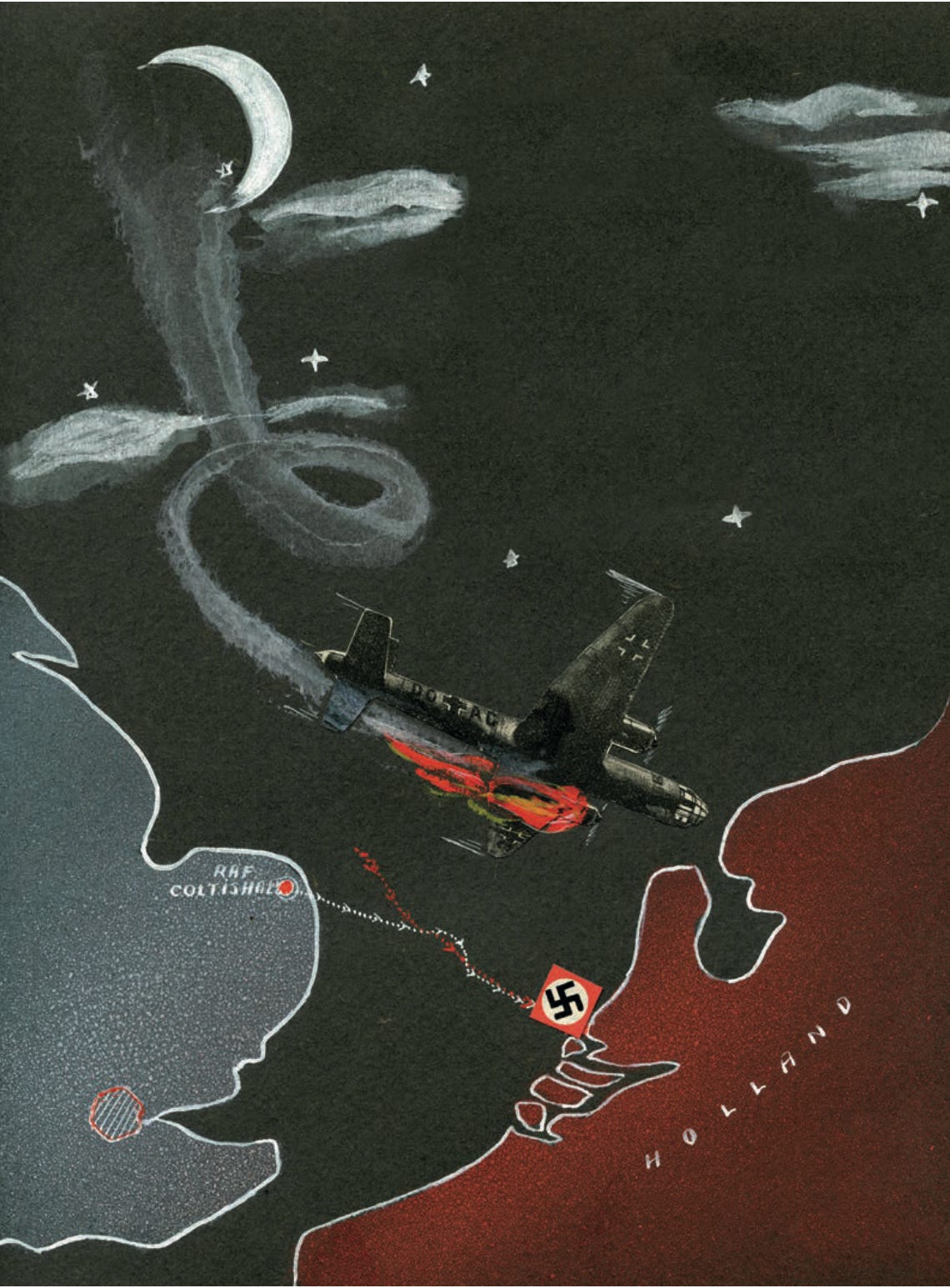
Each aircraft left behind a thick white vapour-trail caused by condensation from the hot exhausts emitting hot fumes coming into contact with ice cold air outside. This created a fantastic picture in the sky, and it was clearly visible from the ground and therefore not very welcome from our point of view. These ‘contrails’ gave the Germans the exact position of our aircraft. I was given to understand that the important factor for the German anti-aircraft gunners, was the ability to assess our exact height so as to be able to aim their guns correctly. But all this could only be achieved by estimation. I got myself settled next to one of the side-gunners and he already started to show me black puffs of smoke here and there, which were exploding shells from the ack-ack guns on the ground. Roy, the gunner, said that so far it looked good, because Jerry was aiming too low.
This innocent little black puff of smoke was, in fact, hundreds of exploding fragments, which flew in all directions. I did know only too well that a direct hit of the aircraft was extremely rare, but shells exploding too low created a lot of danger and they could cause a lot of damage to the aircraft and crews themselves. If a vital part of an aircraft was damaged, it could put the whole machine out of action. So, all this did not make the outlook very rosy, and we had many hours still ahead of us. With all these new thoughts, I returned to the pilot’s cockpit and Thompson just smiled, guessing my newly gained knowledge and said: ‘So now you can see Nicky how we conduct our fighting! It’s something quite different, than your little night fighter flying at night!’ However, I had my own view about these things, and I knew which type of fighting I preferred!
...
Suddenly the radio silence was broken, and dozens of various orders were being given. The first formations in front of us were being attacked by a group of Me 109 fighters. My own preservation instinct as a night fighter was affecting my mind. I started to gaze into the sky, but at that moment I could not see anything. I felt an ever-increasing tension and everything was totally alien to my type of combat fighting. The whole crew reported readiness to the captain. The steel helmets of the gunners were turning left, right, up and down, scanning the skies. Each of them had an allocated sector to keep his eyes on. One single moving black dot in the distance could represent danger. The view was incredible and with such fantastic visibility, we could see the west coast of Germany.
At that moment, our section had been spared any attack, but we had heard one B-17 was badly hit and according to the wireless operator, the whole crew managed to bale out. One other Fortress was badly damaged by flak and so they turned north, probably towards neutral Sweden. A lone, damaged Fortress flying back to England would be almost certainly shot down.
...
I was back with the navigator watching him at work. He established the new wind direction and velocity, as this particular information is vital during the release of bombs to ensure that they land on their given target. Suddenly we were interrupted with something we quite expected. All our guns were rattling away, causing enormous noise in the whole aircraft. Before I could get to a better viewing place to see what was going on, I heard in my earphones that we were being attacked by a group of Me 109s. All aircraft were told to tighten the formation, so that the enemy fighters could not penetrate us.
A big battle developed, something I will never forget. All the gunners were shouting out the positions of the attacking fighters. I could see thousands of red tracer bullets crisscrossing each other and it was impossible to believe that they could miss the attacking enemy. There was hell all around us.
One Messerschmitt passed under us so close that I could actually see the head of the pilot in his cockpit! I just could not believe what I had seen, a complete reverse to what Bill and I would experience in our night fighter. Our Beau would certainly not fly straight and level in this situation. We would either dive, or try to get away. But with the B-17 things were exactly the opposite. Our pilot held a steady course and calmly piloted on regardless of what was going on.
Well, I just had to accept these typical bomber tactics. They followed the motto: ‘United we live – Divided we die.’
Copyright © Zbyšek Nečas-Pemberton, 2024 ‘Beaufighter And Mosquito Operations In WWII: The Memoirs Of A Radar Operator’ Reproduced courtesy of Airworld and Pen & Sword Books Ltd.
Recently on World War II Today …
Intelligence on the front line
On the Anzio beachhead everyone was either on the frontline or just behind it, the depth of ground held by the Allies was only a few miles at its greatest extent, and everyone was under threat from shellfire. There were a number of caves and the basements of buildings which provided relatively good sleeping accommodation, secure against most shells except for a direct hit. But most had to chance it, including the wounded in tented hospitals waiting to be evacuated.
The Cavalry arrive in the Pacific
In early 1944, the US campaign to isolate the vast Japanese base at Rabaul was progressing well. The strategy of Operation Cartwheel was to keep thousands of Japanese troops restricted within the confines of their base - but not to attempt a direct assault. One of the last links in the chain connecting Rabaul with Japan was the Admiralty Islands, some 360 miles away. Not only would taking the long airfield and deep water anchorage further isolate Rabaul, but they also offered facilities to the US forces as they prepared to return to the Philippines.


